Kukri / Khukuri – Traditional Nepalese Blade Used for Combat, Farming & Ritual
The kukri (also spelled khukuri) is the national blade of Nepal — an iconic curved knife with a powerful edge and a story that spans centuries. Recognized around the world for its distinctive shape and legendary performance, the kukri/khukuri is deeply tied to Nepalese history, culture, military tradition, and daily life.
At Everest Forge, we continue this living legacy by hand-forging authentic kukris/khukuris in Nepal, preserving the knowledge and craftsmanship passed down through generations.
Origin of the Kukri / Khukuri
The exact origin of the kukri/khukuri is debated, but it is believed to have evolved from ancient Greek kopis or Indian sacrificial blades. Historical records trace its use in Nepal as far back as the 7th century, but it rose to prominence during the unification of Nepal under King Prithvi Narayan Shah in the 18th century. To explore in depth and see classic designs, head to our complete collection of Authentic Khukuri / Kukri blades .
What Is a Kukri / Khukuri?
A kukri or khukuri is a forward-curved knife with a blade that widens toward the tip. This design delivers strong chopping power with minimal effort, making it one of the most versatile blades in the world. The curve shifts the weight forward, allowing for deep, clean cuts ideal for everything from clearing brush to combat.
Used as a tool, weapon, and ceremonial blade, the kukri/khukuri is part of everyday life in Nepal — and a symbol of resilience and craftsmanship recognized worldwide.
Historical Significance
The kukri/khukuri is best known as the traditional weapon of the Gurkhas, Nepal’s elite soldiers. Since the early 19th century, Gurkhas have carried the kukri into battle, earning global respect for their bravery, skill, and fearlessness.
The khukuri became widely known during the Anglo-Nepalese War (1814–1816) and was later adopted by Gurkhas serving in the British and Indian armies, where it remains part of the uniform today. The kukri has seen action in World War I, World War II, and modern conflicts across the globe.
It is not only a weapon but a symbol of honor, loyalty, and national pride.
Everyday Use of the Kukri / Khukuri
Beyond the battlefield, the kukri/khukuri is a practical, multi-purpose tool used in Nepali homes and farms. It is the most essential tool in rural areas — often the only blade a household owns.
Common household and farming uses include:
- Chopping firewood, kindling, and branches
- Clearing brush and tall grass
- Harvesting crops like corn, sugarcane, and millet
- Slaughtering and butchering animals
- Food preparation including meat, vegetables, and fruits
- Carving tools or bamboo structures for home use
The kukri/khukuri functions as a knife, axe, and machete combined — lightweight enough for daily use, yet powerful enough for heavy-duty tasks.
The kukri/khukuri functions as a knife, axe, and machete combined — lightweight enough for daily use, yet powerful enough for heavy-duty tasks.
Religious and Cultural Importance
The kukri/khukuri also holds deep spiritual and cultural meaning in Nepal:
- Dashain: Used in ceremonial animal sacrifices offered to Goddess Durga.
- Puja rituals: Decorated with tika, flowers, and incense as a sacred object.
- Home protection: Kept in homes to ward off evil spirits and attract good fortune.
- Symbolic gift: Presented during weddings and life ceremonies to signify honor.
Famous Kukri / Khukuri-Making Regions in Nepal
Several regions in Nepal are known for their distinct kukri/khukuri craftsmanship, often shaped by generations of blacksmiths and specific blade styles.
Dharan: A major manufacturing hub for high-quality military kukris and modern tactical designs.
Bhojpur: The historical birthplace of the Bhojpure kukri, known for broad blades and ceremonial weight.
Chainpur: Known for crafting fine utility blades and traditional kukris used for farming and home tasks.
Salyan: The origin of the Salyani kukri with a sickle-like blade profile, forged in the mid-western hills of Nepal.
Kathmandu Valley: A hub for decorative, ceremonial, and export-quality kukris with refined finishing.
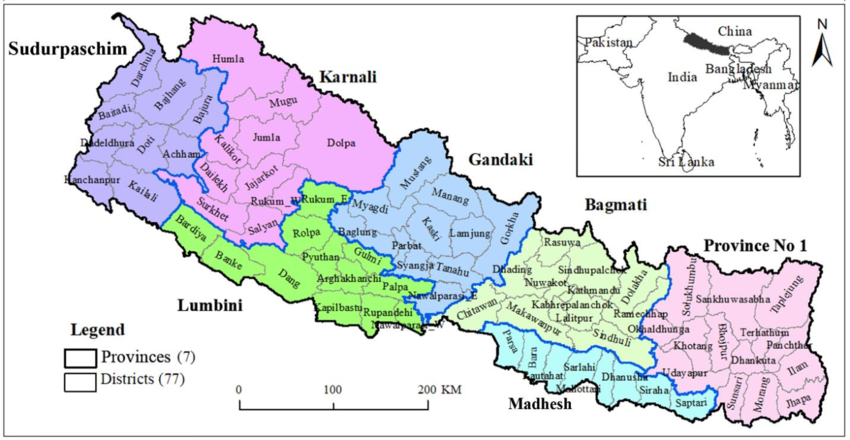
Map of Nepal showing major kukri/khukuri-making regions such as Dharan, Bhojpur, Chainpur, Salyan, and Kathmandu Valley.
Types of Kukri / Khukuri by Handle and Blade Shape
Kukris and khukuris are diverse in design, size, and purpose. They are generally classified by handle construction and blade shape.
By Handle Construction
Parowala Handle (Rat-Tail Tang): Traditional style with a narrow tang inserted into the handle. Lightweight and commonly used in ceremonial or light-use kukris.
Panawal Handle (Full Tang): Strong modern construction where the tang is riveted through the handle slabs. Ideal for heavy-duty, tactical, and survival kukris.
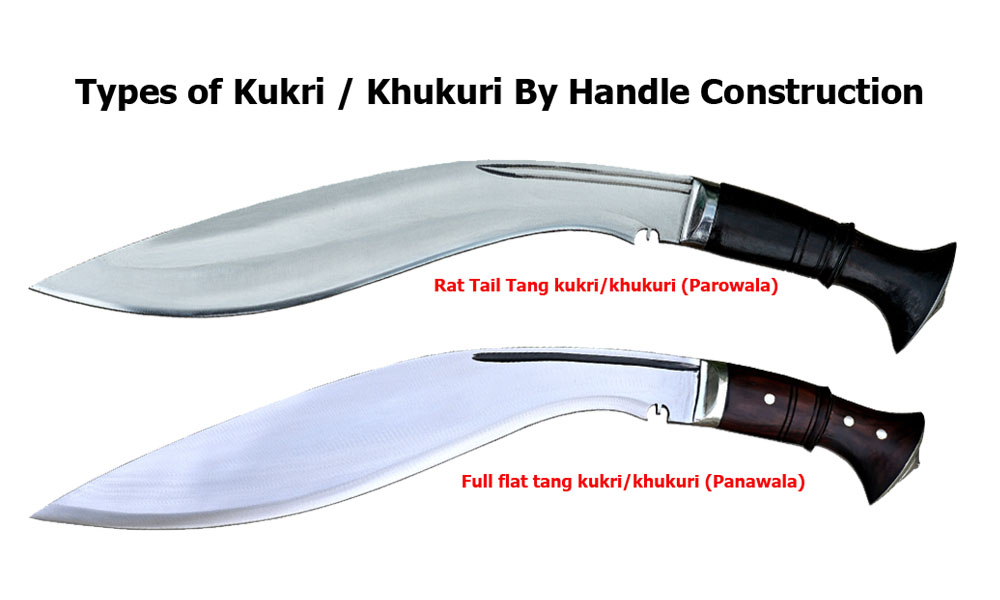
Illustration showing the two main types of kukri/khukuri handles: traditional Parowala (rat-tail tang) and modern Panawal (full tang) construction.
Kukri / Khukuri Blade Shapes
Below are some of the most well-known kukri/khukuri blade shapes used across Nepal:
- Sirupate: Long, slender, and fast. Ideal for precision and speed, often used in martial arts or jungle survival.
- Bhojpure: Broad and heavy. Suited for ceremonial or heavy-duty chopping tasks.
- Budhune: Shorter, more compact blade often used for utility and household work.
- Baspate: Balanced curve and thickness, making it ideal for all-around usage.
- Angkhola: Featuring one or more fullers (grooves) to reduce weight and add strength. Great for continuous use and field work.
- Chirrawala: Known for its multiple fullers (often 3), a modern evolution of the Angkhola for heavy-duty functionality.
- Dragon Kukri: Features decorative or engraved dragon motifs, often ceremonial or gifted pieces, combining artistic craftsmanship with symbolic strength.
- Salyani: Traditionally forged in western Nepal, Salyani kukris feature a distinctive sickle-like shape with a deeper curve, optimized for sweeping cuts. Known for utility and unique regional identity.
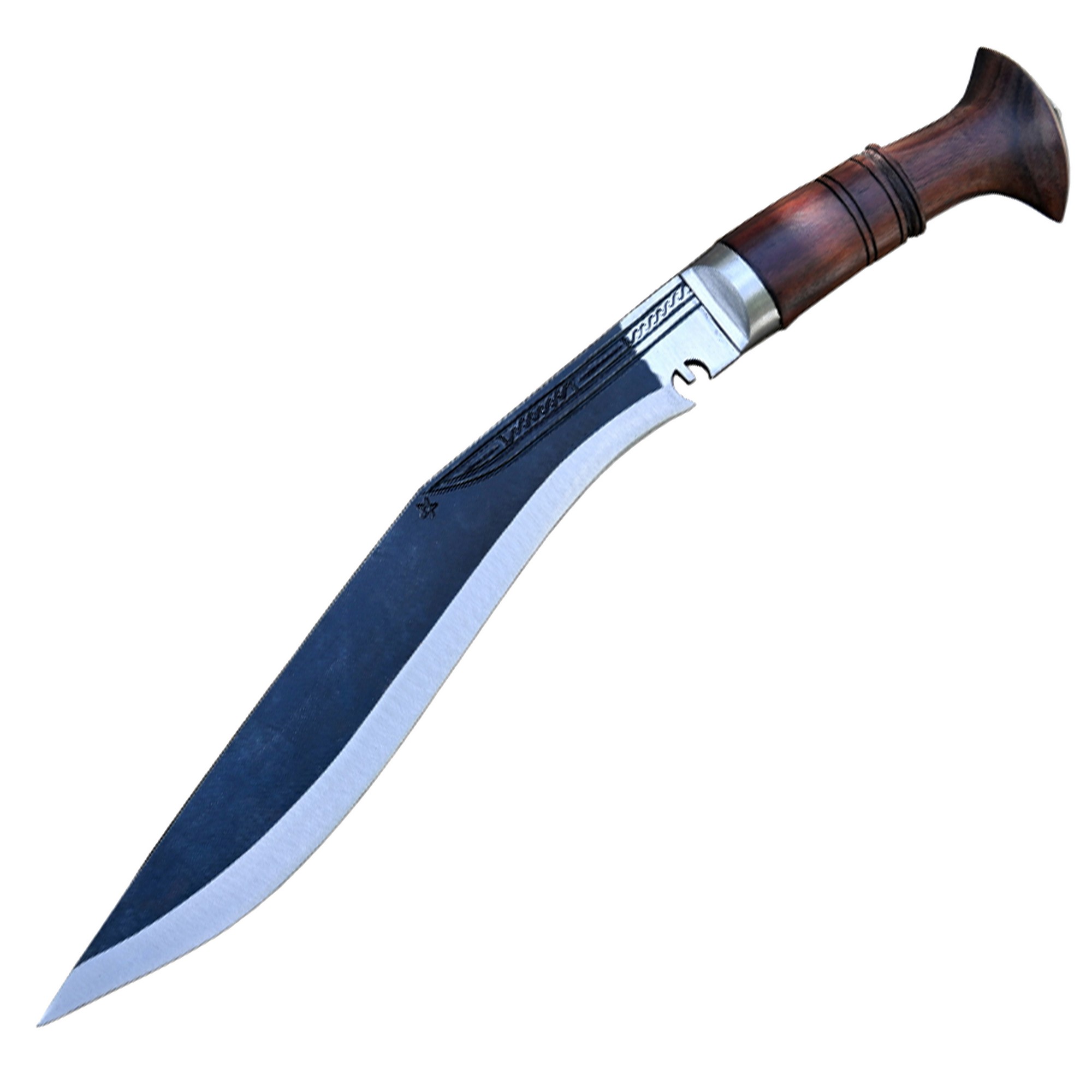
Sirupate Kukri / Khukuri
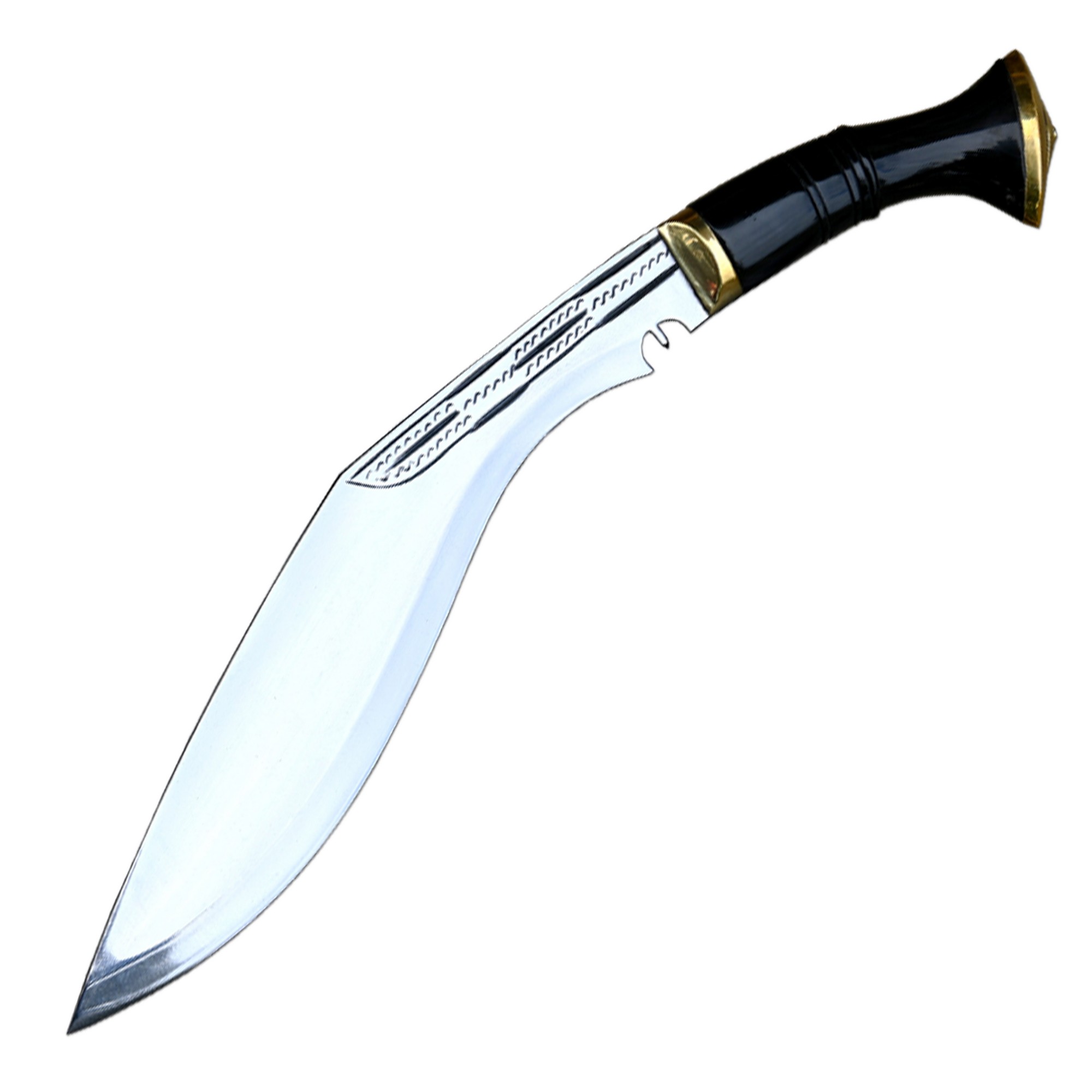
Bhojpure Kukri / Khukuri
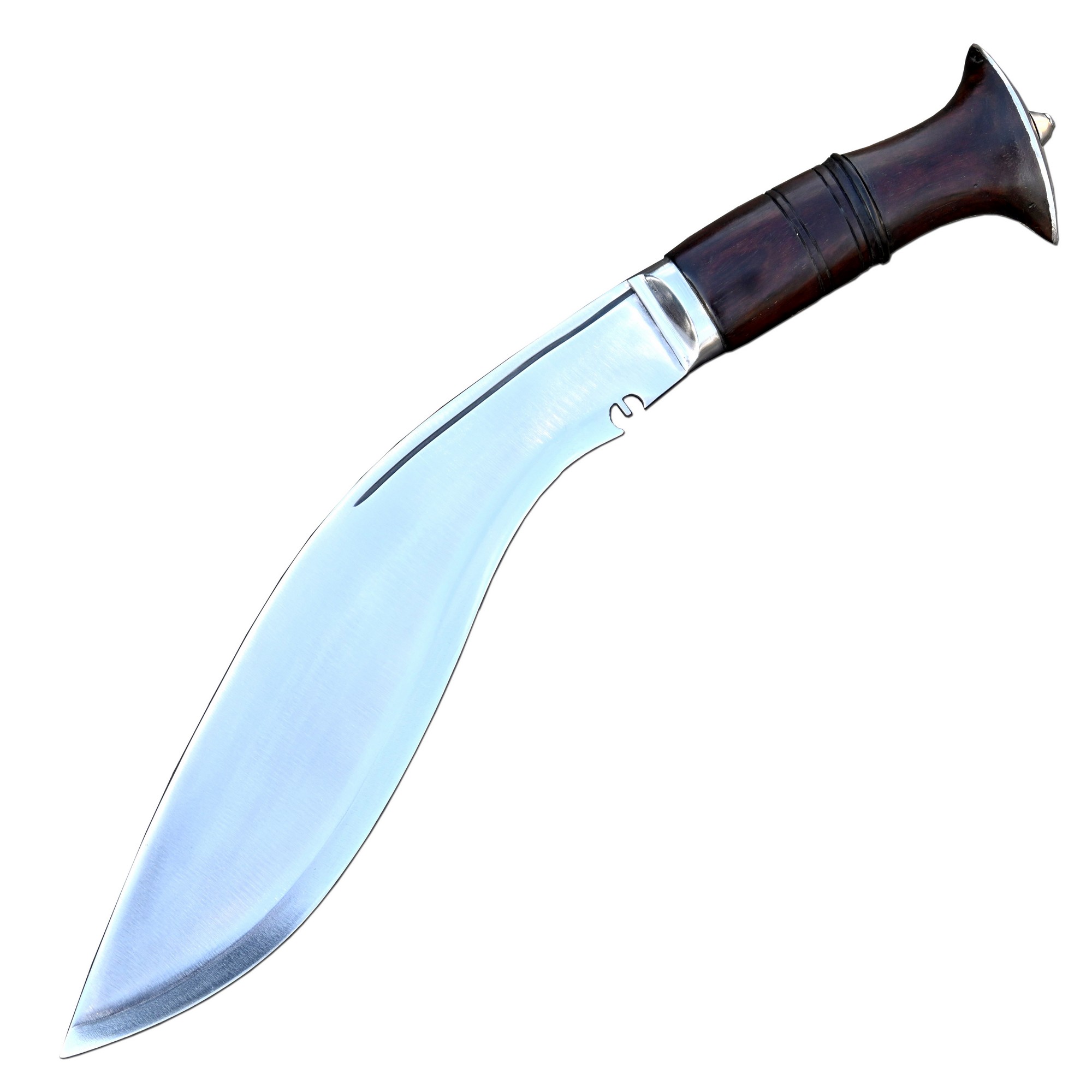
Budhune Kukri / Khukuri
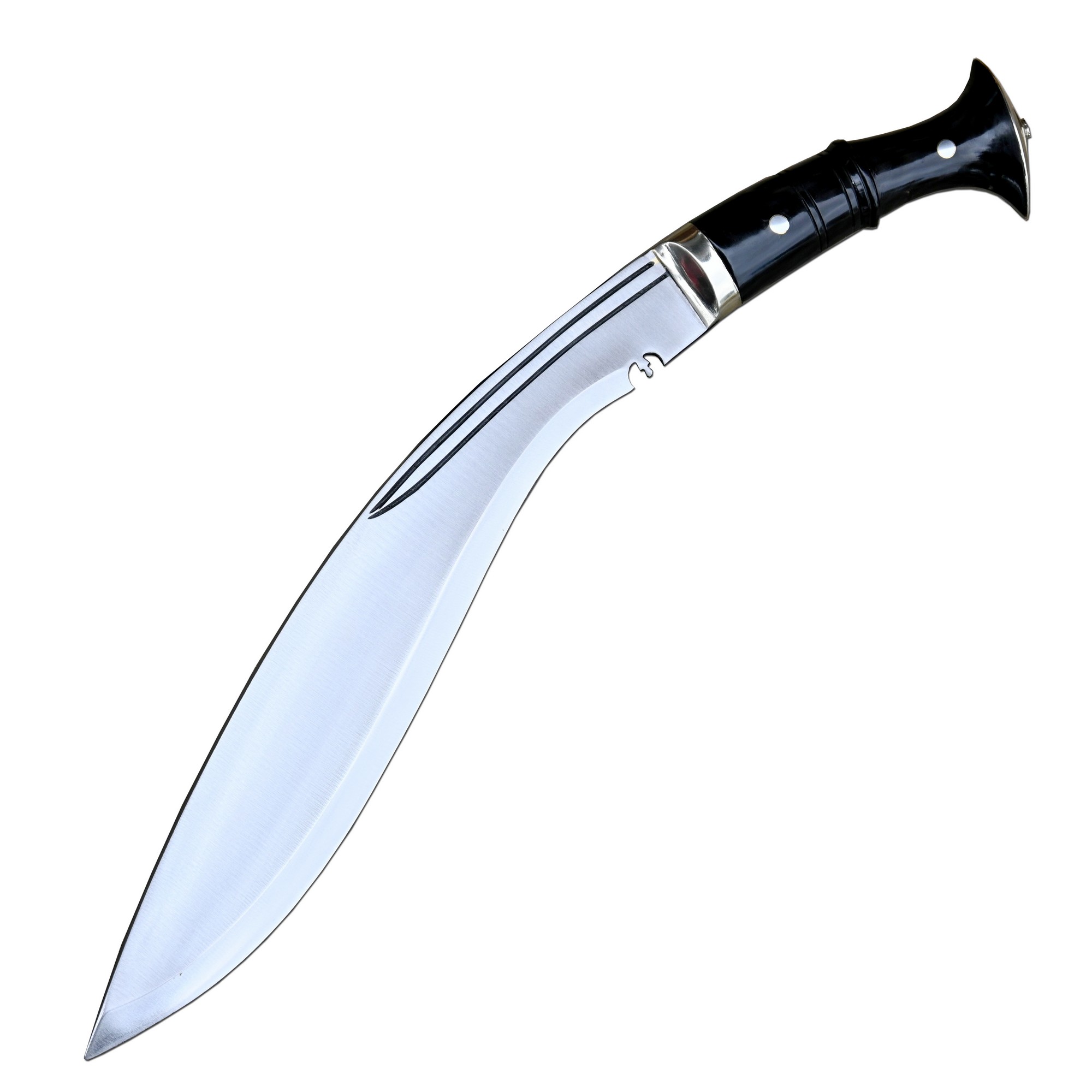
Baspate Kukri / Khukuri
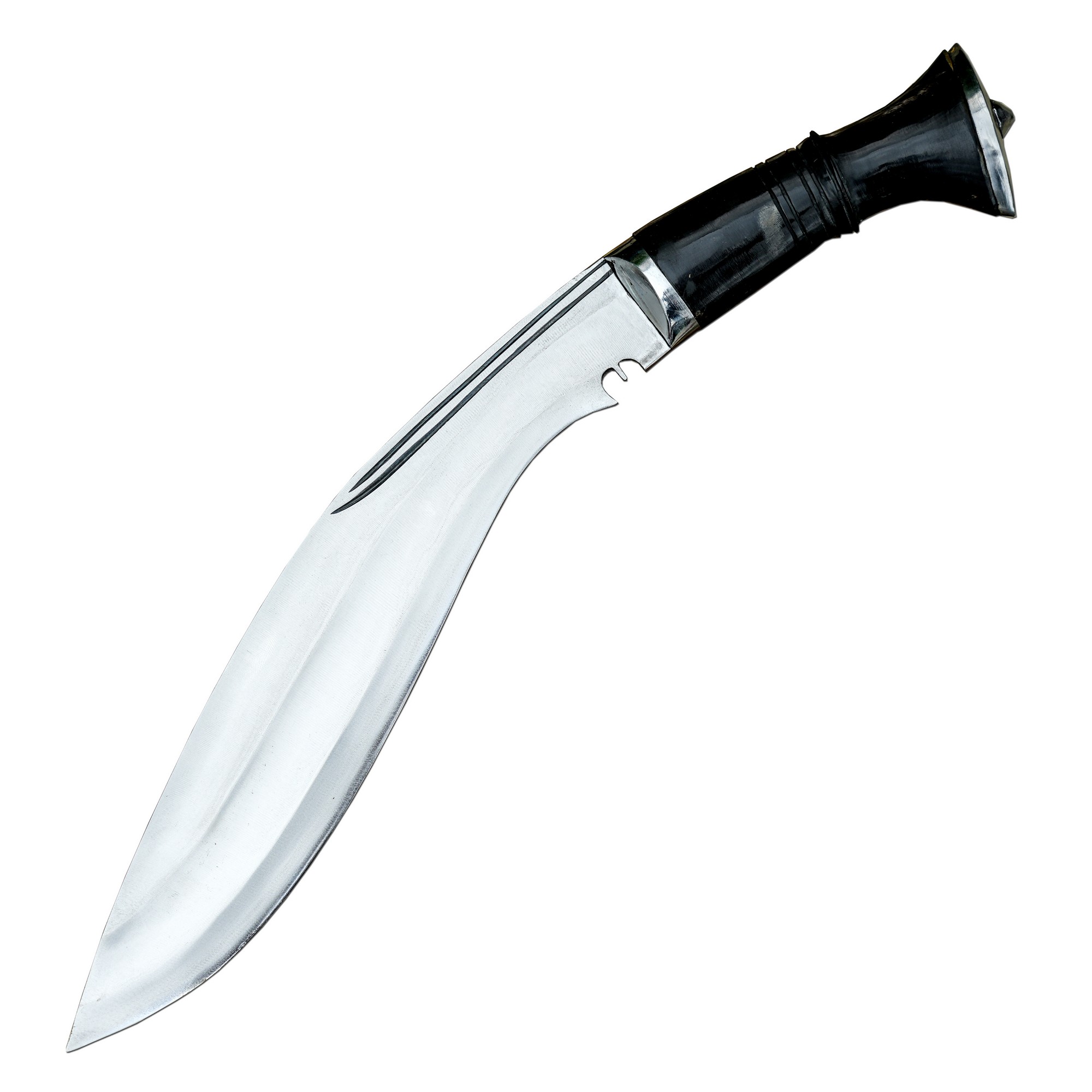
Angkhola Kukri / Khukuri
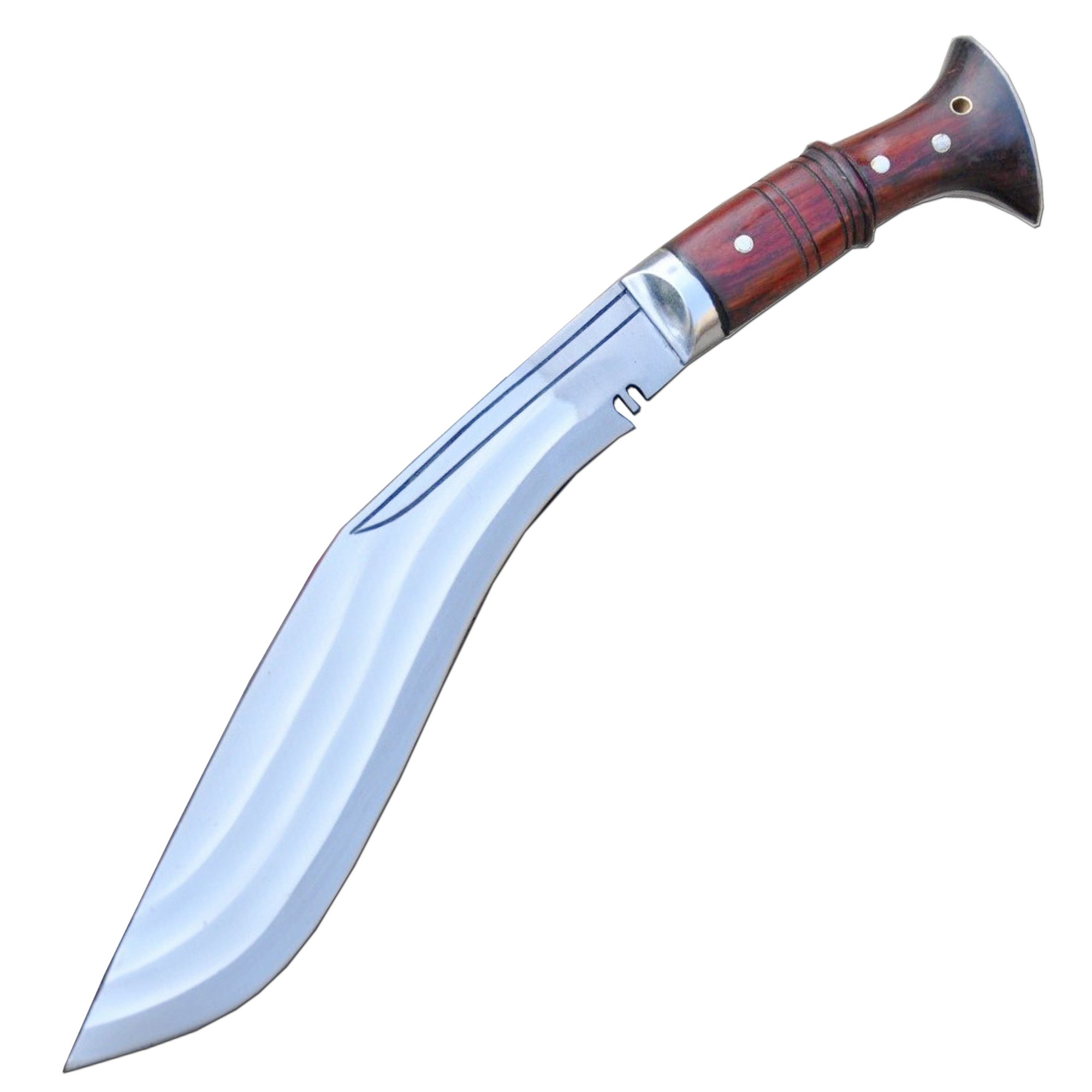
Chirrawala Kukri / Khukuri
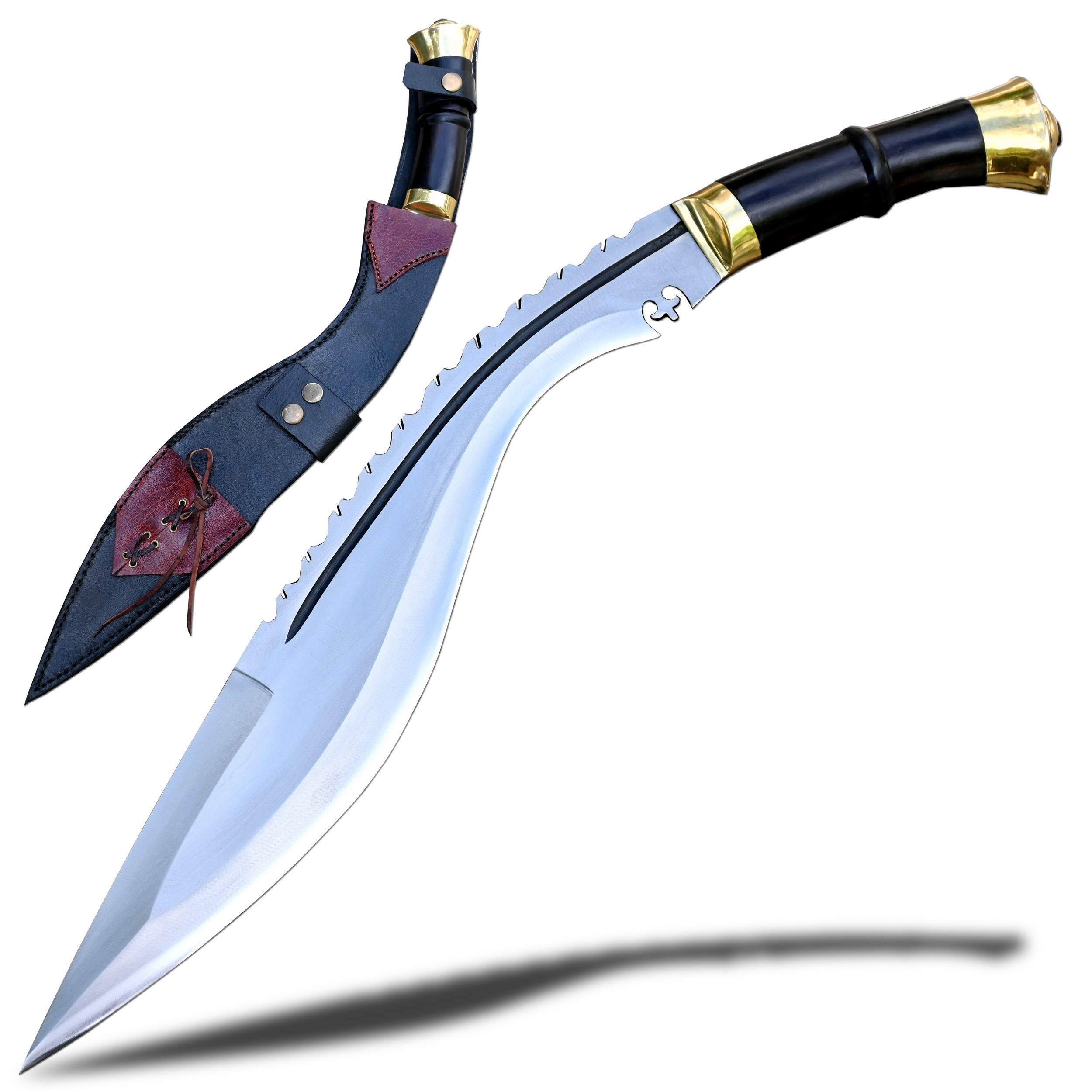
Dragon Kukri / Khukuri
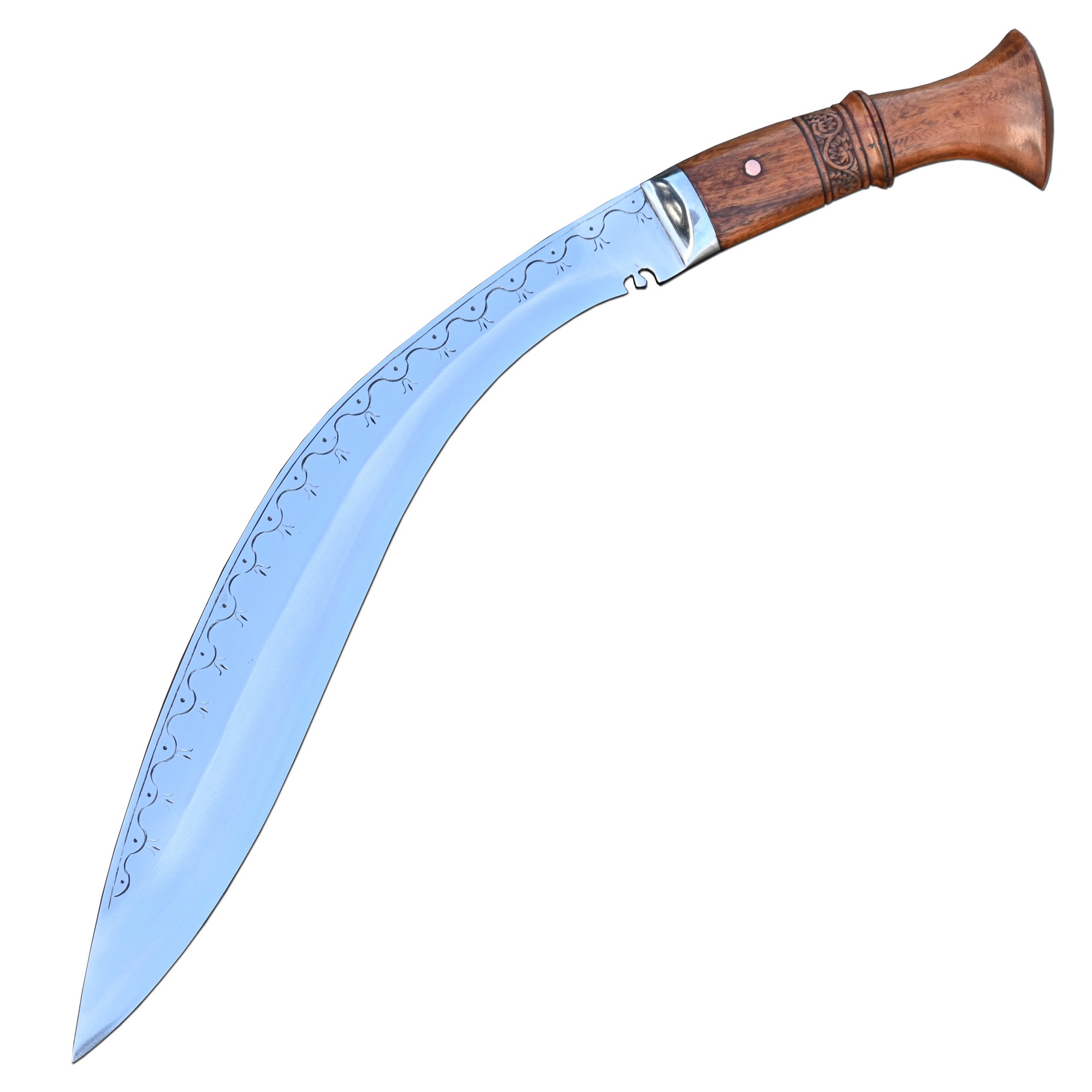
Salyani Kukri / Khukuri
Kukri / Khukuri as a Multi-Functional Blade
As a Sword: The kukri's forward-curving blade gives it tremendous chopping and slashing power, making it an effective close-combat weapon. In military contexts, it functions much like a short sword with deadly precision and reach.
As a Machete: Its ability to clear brush, hack through dense vegetation, and shape wood makes the kukri an ideal machete in rural and jungle environments.
As an Axe: The heavy front-weighted blade acts like an axe for chopping firewood, splitting branches, and heavy-duty fieldwork — a reliable alternative when no axe is available.
As a Utility Knife: From cutting meat to shaving kindling, the kukri performs everyday utility tasks with ease, making it the only knife many rural households rely on.
Traditional, Modern, and Custom Kukri / Khukuri
Traditional Kukri: These follow classic styles passed down through generations and are typically forged with a rat-tail tang, horn or wood handle, and minimal decoration. They are closely tied to regional identity and spiritual rituals.
Modern Kukri: Designed for practicality and often made with full tang construction, micarta or rosewood handles, and tactical guards. Popular among military, collectors, and outdoor survivalists.
Custom Kukri: Hand-forged to customer specifications — allowing for personalized size, material, engraving, finish, or handle shape — crafted by master bladesmiths to match exact needs.
Enduring Legacy of the Kukri / Khukuri
The kukri/khukuri remains Nepal’s most iconic blade — a timeless tool that bridges utility, spirituality, and national identity. From village farms to battlefield trenches, from sacred rituals to global collections, it continues to serve, protect, and inspire.
This legacy is what makes the kukri/khukuri not just a knife — but a living piece of history.
